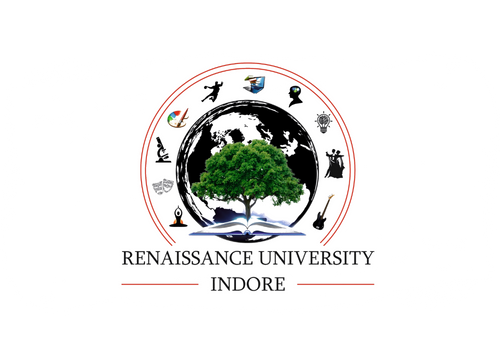




Ph.D. (Agricultural Science) DET Syllabus
A GREAT FUTURE RELIES
ON GREAT EFFORT.
- Home
- Ph.D. (Agricultural Science) DET Syllabus
BENJAMIN FRANKLIN
UNIT 1
Crop Ecology and Geography –
UNIT 2
Weed Management –
Scope and principles of weed management; Weed classification, biology, ecology and allelopathy; Weed seed dormancy, Crop weed competition, weed threshold; Herbicides classification, formulations, mode of action, selectivity and resistance; Persistence of herbicides in soils and plants; Application methods and equipment; Cultural, physical, chemical and biological weed control, bio-herbicides: Integrated weed management; Special weeds, parasitic and aquatic weeds and their management in cropped and non-cropped lands; weed control schedules in field crops, vegetables and plantation crops; Role of Genetically Modified (GM) crops in weed management.
UNIT 3
Soil Fertility and Fertilizer Use –
History of soil fertility and fertilizer use; Concept of essentiality of plant nutrients, their critical concentrations in plants, nutrient interactions, diagnostic techniques with special emphasis on emerging deficiencies of secondary and micro-nutrients; Soil fertility and productivity and their indicators; Fertilizer materials including liquid fertilizers, their composition, mineralization, availability and reaction in soils; Water solubility of phosphate fertilizers; Slow release fertilizers, nitrification inhibitors and their use for crop production; Principles and methods of fertilizer application including fertigation; Integrated nutrient management and bio-fertilizers; Agronomic and physiological efficiency and recovery of applied plant nutrients; Criteria for determining fertilizer schedules for cropping systems – direct, residual and cumulative effects; Fertilizer related environmental problems including ground water pollution; Site-specific nutrient management.
UNIT 4
Dryland Agronomy –
Concept of dryland farming; dryland farming Vsrainfed farming; History, development, significance and constraints of dryland agriculture in India; Climatic classification and delineation of dryland tracts; Characterization of agro-climatic environments of drylands; Rainfall analysis and length of growing season; Types of drought, effect on plant growth, drought resistance, drought avoidance, drought management; Crop Planning including contingency, crop diversification, varieties, cropping systems and mid-season corrections for aberrant weather conditions; Techniques of moisture conservation in-situ to reduce evapotranspiration, runoff and to increase infiltration; Rain water harvesting and recycling concept, techniques and practices; Summer ploughing, seed hardening, pre-monsoon sowing, weed and nutrient management; Concept and importance of watershed management in dryland areas.
UNIT 5
Crop Production –
Crop production techniques for cereals, millets, pulses /grain legumes, oilseeds, fiber crops, sugarcane, tobacco, fodder and pasture crops including origin, history, distribution, adaptation, climate, soil, season, modern varieties, seed rate, fertilizer requirements, crop geometry, intercultural operations, water requirement, weed control, harvest, quality components, industrial use, economics and post-harvest technology. Package of practices in the respective locations.
UNIT 6
Agricultural Statistics –
Frequency distribution, standard error and deviation, correlation and regression analyses, coefficient of variation; Tests of significancet test, F test and chi-square (x2); Data transformation and missing plot techniques; Design of experiments and their basic principles, completely randomized, randomized block, split plot, strip-plot, factorial and simple confounding designs; Efficiency of designs; Methods of statistical analysis for cropping systems including intercropping; Pooled analysis.
UNIT 7
Sustainable Land Use Systems –
Tillage – Concept, types, tilth, tools and implements; Modern concepts of tillage and conservation agriculture; Land capability classification, Alternate land use and Agro forestry systems; Types, extent and causes of wasteland; Shifting cultivation; Concept of sustainability; Sustainability parameters and indicators; Agricultural and agro-industrial residues and its recycling.
UNIT 8
Soil-Plant-Water Relationship –
Importance of water in agriculture; Hydrological cycle; runoff and infiltration, factors affecting infiltration; Soil water relations, water retention by soil, soil moisture characteristics, field capacity, permanent wilting point, plant available water and extractable water; Soil irrigability classifications, Determination of soil water content, computation of soil water depletion, soil water potential and its components; Movement of soil water-saturated and unsaturated water flow; Evapotranspiration (ET), PET, AET and its measurements. Crop co-efficient; Plant water relations: Concept of plant water potential, its components; Methods of moisture estimation in plants. Soil and water conservation – measures – agronomical, mechanical and agrostological.
UNIT 9
Irrigation Water Management –
History of irrigation in India; Major irrigation projects in India; Water resource development; Crop water requirements; Concepts of irrigation scheduling, Different approaches of irrigation scheduling; Concept of critical stages of crop growth in relation to water supplies; Methods of irrigation viz. surface, subsurface and pressurized irrigation methods, merits and demerits; Measurement of irrigation water, application and distribution efficiencies. Conjunctive use of water; Interaction between irrigation and fertilizers.
UNIT 10
Management of Problematic Soils and Crop Production –
Problem soils and their distribution in India, acidic, saline, waterlogged and mined- soils; Response of crop to acidity, salinity, excess water and nutrient imbalances; Reclamation of problem soils, role of amendments and drainage; Crop production techniques in problem soils – crops, varieties, cropping system and agronomic practices; Degraded lands and their rehabilitation. Management strategies for flood prone areas; Drainage for improving water logged soils for crop production; Crop production and alternate use of problematic soils and poor quality water for agricultural.
UNIT 11
Cropping and Farming Systems and Organic Farming Cropping system –
Definition, principles, classification; cropping system for different ecosystem; Interaction and indices; Non-monetary inputs and low cost technologies.LEIA, HEIA and LEISA;Farming systems – type – natural, bio-dynamic, bio-intensive, response, precision, biological and organic farming; organic and bio inputs, Soil health and organic matter and Integrated organic farming systems; IFS – concepts, models for different ecosystem, resource recycling and evaluation.


